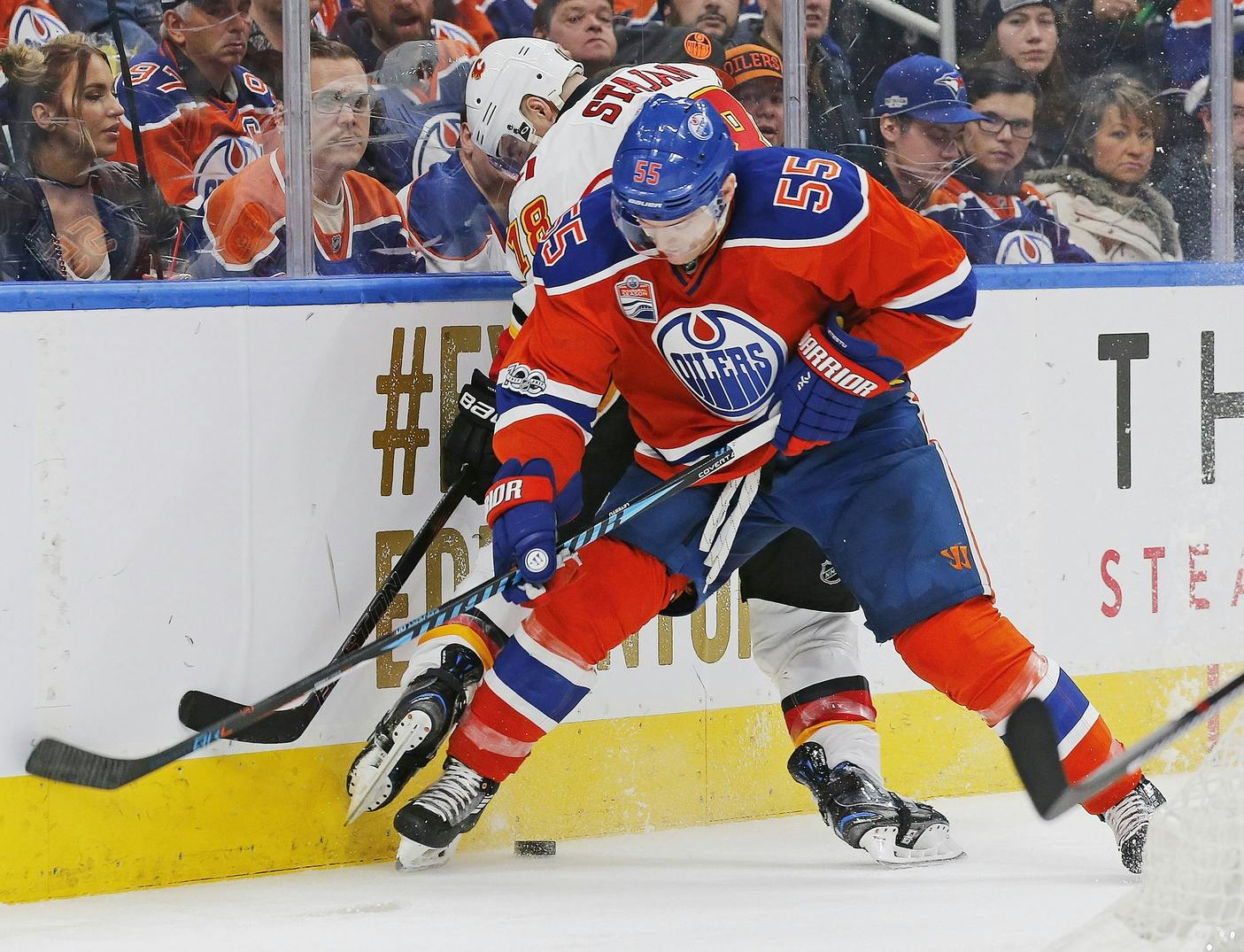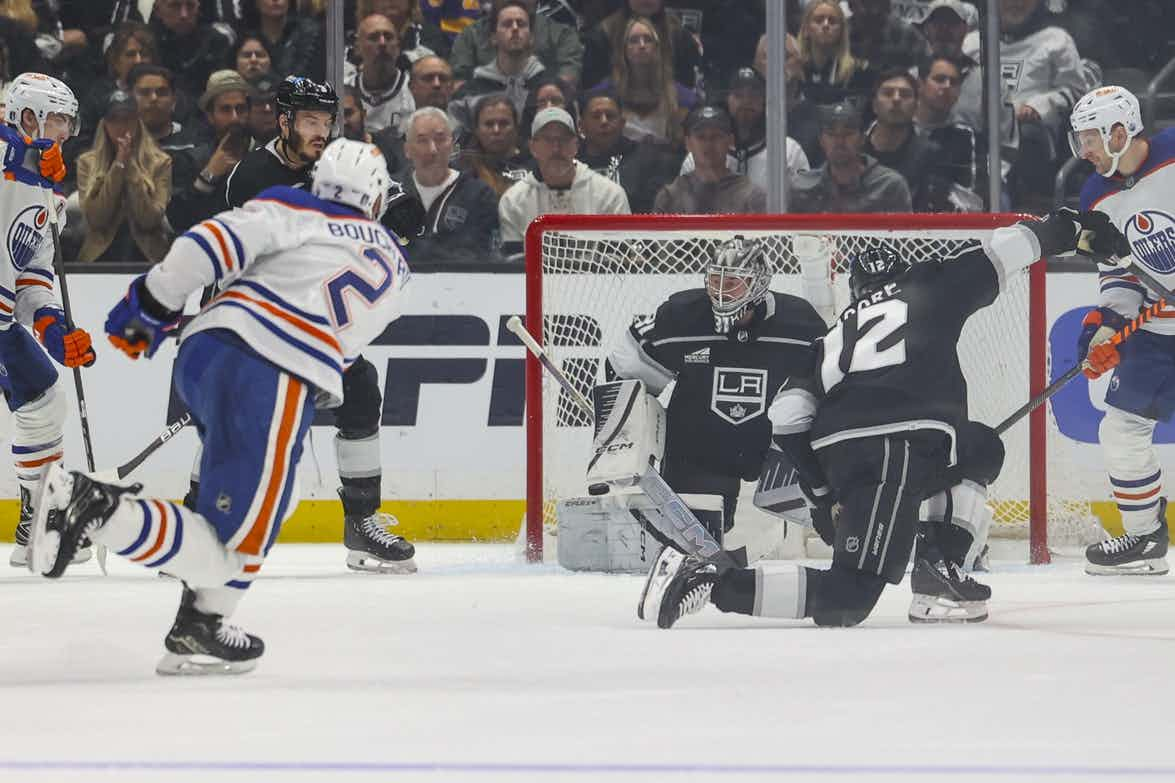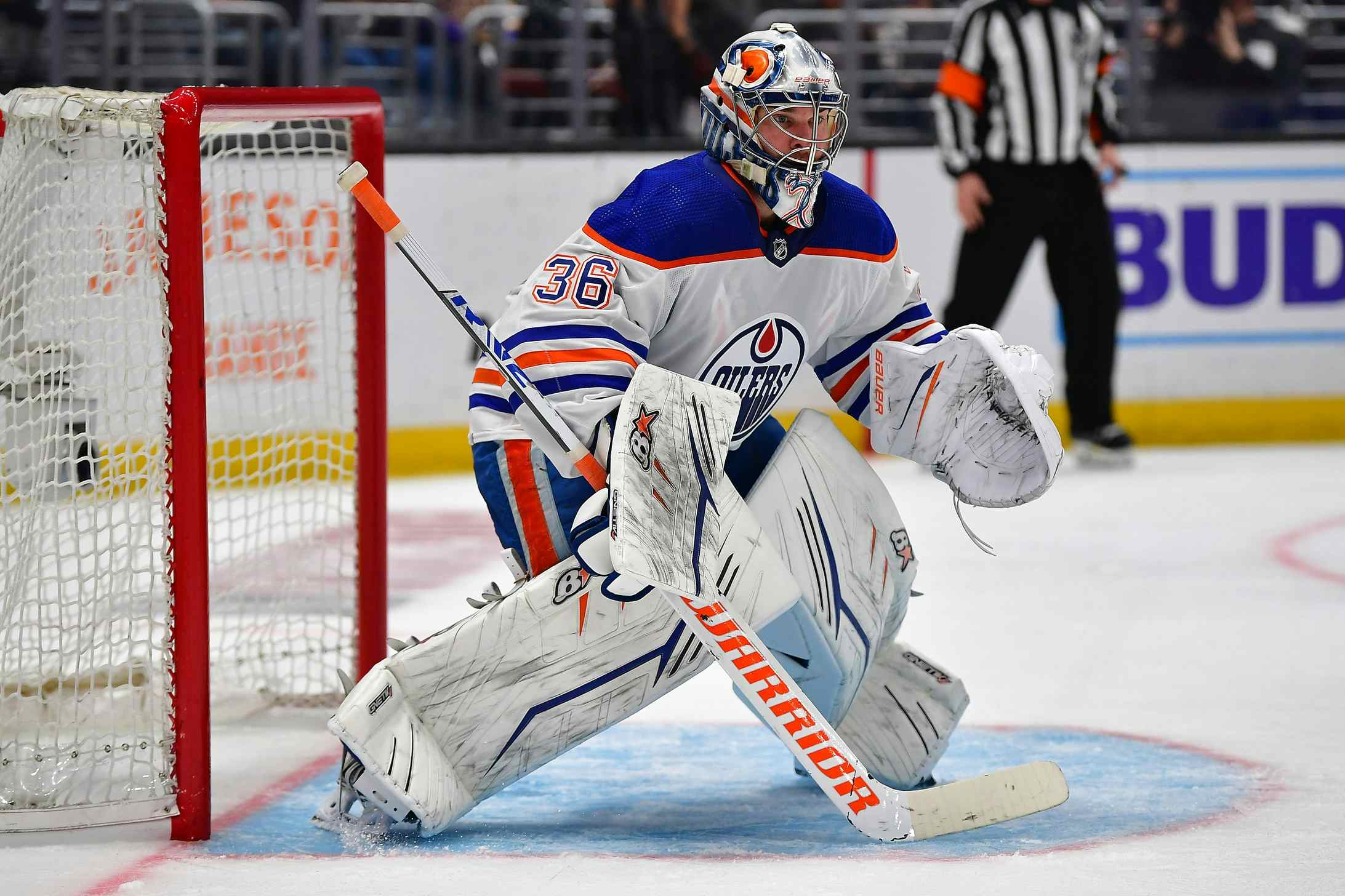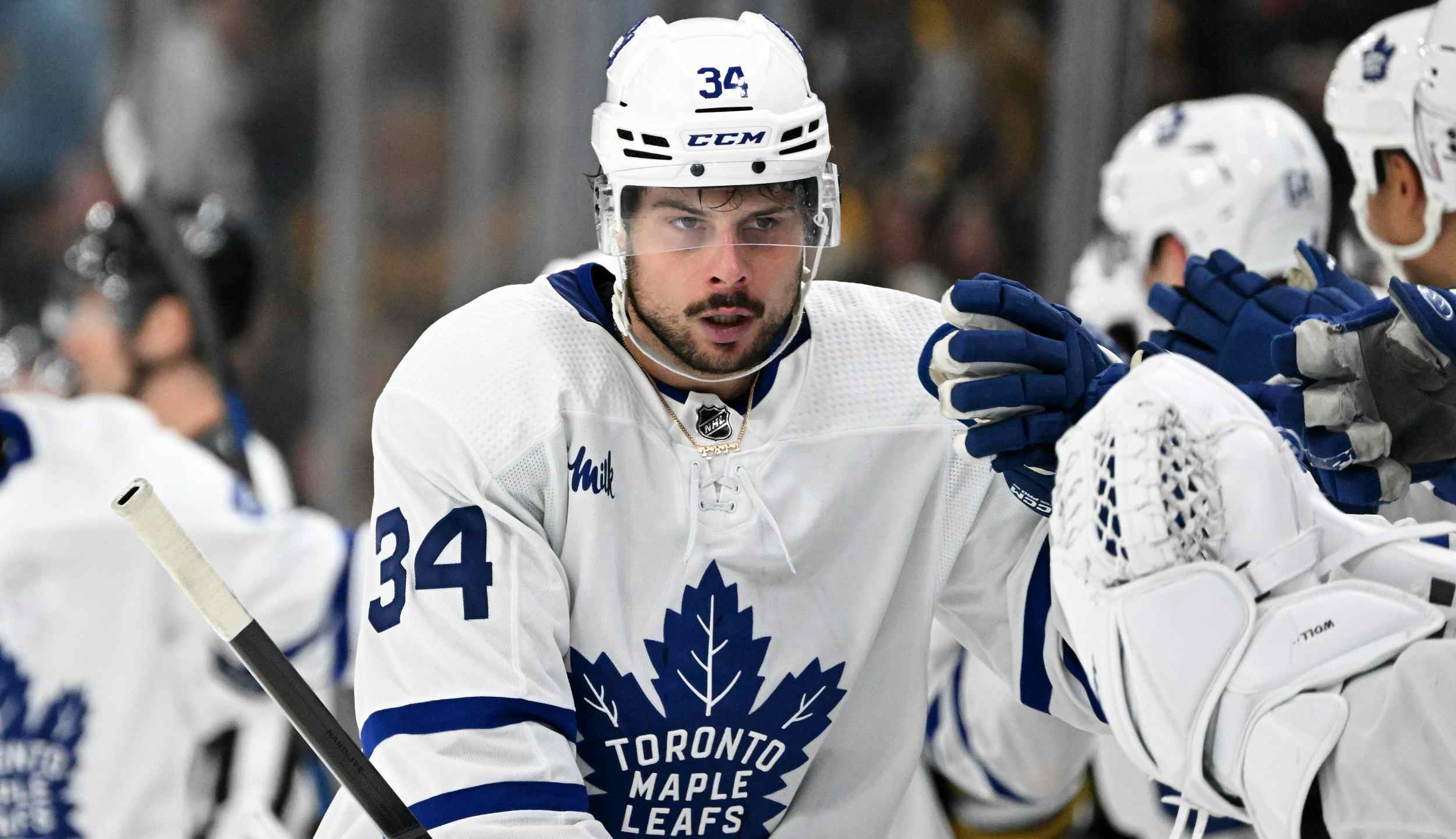Edmonton Oilers must fix their penalty kill before the postseason

We got our first look at Todd McLellan’s revised penalty kill against the New York Islanders on Tuesday, as the Oilers took their first penalty in the month of March.
The good news is that it’s always a bad idea to draw firm conclusions from a sample of one. The bad news is that the Islanders scored, continuing an awful shorthanded run for Edmonton that stretches back to the start of 2017.
The difference before and after January 1 is remarkable:
- Prior to January 1: 95 of 115 penalties killed, 82.6% success rate
- Since January 1: 50 of 68 penalties killed, 73.5% success rate
An 82.6 percent clip is extremely respectable, and would rank 11th in the NHL right now. If the Oilers were performing at that rate, the coaching staff might be looking to fine-tune for the postseason, since eight or nine of the teams going to the playoffs are in the top 10.
That is not what’s happening, though. The worst penalty-killing team in the league this year is Dallas, with the Stars succeeding in killing off just 74 percent of their penalties. Since January 1, Edmonton has underperformed the worst team in the NHL while shorthanded, and that’s a cause for serious concern.
Adding insult to injury is the Oilers’ conservative style. With just three shorthanded goals on the season—and none in 2017—Edmonton not only struggles to keep the puck out of its own net but also gives the opposition no reason to fear a break the other way.
To his credit, Todd McLellan knows the team has been bad lately, and has tried to correct the issue. In his Monday availability, he explained that the time spent on the unit in practice hadn’t been aimed at tweaking for a single opponent (in this case the Detroit Red Wings) but rather at addressing some longer-term deficiencies:
We didn’t alter the penalty kill just for the Detroit game. We reviewed, refined, polished up positioning, timing, situational play as much as we possibly could. We’ll need that regardless of who we play. I’d like to think that the players haven’t lost those lessons from five or six days ago, that they can apply them to the Islanders or Pittsburgh or whoever else is coming. That was something that we needed. We’ve been able to do that with faceoffs, some of our neutral zone play, today some of our d-zone stuff, because we have had more practice time.
In its first look since Edmonton’s return to home ice, though, that penalty kill allowed another goal against. In this case it was Josh Ho-Sang scoring his first career NHL marker:
As far as power play goals against go, this one isn’t that worrying. Any penalty kill is going to allow some point shots.
It would have been nice if Eric Gryba/Connor McDavid had won the 2-on-2 battle along the boards, but there’s always going to be uncertainty in that kind of battle, and given Edmonton’s structure through the neutral zone Gryba didn’t really have the luxury of playing aggressively at the blue line (he engaged as soon as McDavid got back from forechecking, creating this battle).
It’s also hard not to give Thomas Hickey credit for his work here. The faked shot works so well in large part because Mark Letestu had to get over to the point man quickly; moving at that speed he committed to the block and was pulled out of position. This simultaneously neutralized McDavid, who had to guard the passing lane over to Prince and thus fell away from Ho-Sang.
Basically, we need more time to see if the instituted changes have an effect.
What we can look at now, though, is a breakdown of which players are on the ice when the penalty kill is getting lit up. A good place to start is shots allowed per hour when players are on the ice.

We can start with the absences. Anton Lander and Darnell Nurse were competent penalty killers in the first half of the year, but neither has been on the PK much since January 1 thanks to AHL assignment and injury respectively.
Mark Letestu, the team’s most-used forward, sticks out. I don’t know if he’s overworked or has a nagging injury or what’s happening, but Edmonton has gone from allowing 52 shots per hour with him on the ice to 79 since January 1. Unsurprisingly, the team’s goals-against rate has more than doubled, too. Given his importance to the PK, this is catastrophic, and if he can’t figure things out he’ll need to have his role reduced in the postseason.
The other two potential problems worth noting are Matt Hendricks and Zack Kassian.
Kassian’s numbers have been weak-ish all year, and the shots don’t tell the full story. Scoring chances spike sharply when he’s on the ice. He had the worst scoring chance rate of any skater in the first half of the year, and since January 1 only Letestu is worse.
Hendricks had extremely strong numbers in the early going, but has fallen apart in 2017. I referenced scoring chances earlier; he, Letestu and Kassian are all over 30 against per hour in 2017; all other Edmonton forwards are under 20. Given that Hendricks is 35 and that this is the second time in two years he’s stumbled down the stretch, it may be time to replace him on the PK.
Ryan Nugent-Hopkins has been good all year. Benoit Pouliot, who has been rubbish at five-on-five, has been exceptional on the PK this season; once he’s healthy, he should really get a push here. Connor McDavid has been quite solid, while Leon Draisaitl and Drake Caggiula have both played well in extremely minor roles.
The differences on defence are more subtle than they were up front.
Edmonton runs two main PK pairings: Andrej Sekera/Kris Russell and Oscar Klefbom/Adam Larsson. Benning gets fill-in minutes, while Gryba and Nurse both play regularly when they’re in the lineup, but overall those three account for a relatively small chunk of Edmonton’s total shorthanded ice-time.
Klefbom/Larsson are basically unchanged since the Oilers’ PK imploded. They were fine early on and they’re fine now.
That leaves Sekera/Russell, who have posted ugly numbers in the second half. I’m not really sure that’s their fault, though. We haven’t touched on quality of competition here, but Sekera/Russell have generally been McLellan’s first defence pair choice for the PK, meaning they play tougher minutes and more importantly for our purposes also start a lot of penalty kills with Letestu.
Goaltending is also obviously a major factor, and arguably the decisive one. The Oilers had a 0.897 save percentage leading up to January 1 in 4-on-5 situations; that number has plummeted to 0.835. Presumably Cam Talbot will rebound, though perhaps not all the way to that very impressive 0.897 number. Nevertheless, there isn’t much the head coach can do about goaltending other than to try and reduce the number and quality of the shots against.
I’ll be interested to see how McLellan handles his personnel from here on out. Based on what I’ve looked at today, though, I have some suggestions, all aimed at the forwards:
- First, and most important: Mark Letestu needs to either a) get back to the player he was at the start of the year or b) see his ice-time slashed.
- Ryan Nugent-Hopkins, Benoit Pouliot and Connor McDavid can all take on more work here. Pouliot in particular should be a mainstay once he returns to health; he’s not contributing much elsewhere and his speed matters on the PK.
- Matt Hendricks and Zack Kassian should not be penalty kill mainstays. Hendricks (despite his impressive hitting game) probably shouldn’t be in the lineup at all.
- If there’s a need for another regular, Lander is an obvious recall and would also help in the faceoff circle. Failing that, Draisaitl and Caggiula have both been solid as fill-in guys. Iiro Pakarinen might be a fit, too.
Maybe the recent focus on the penalty kill in practice will turn things around, but given where the problems are I’m skeptical. Letestu and Hendricks are both professionals who know what they’re doing shorthanded, and it probably isn’t mind or spirit letting them down so much as body.
We should know soon. McLellan and his staff have a month to get things working for the playoffs. If the tweaks don’t fix the problem, it will definitely be time to make some personnel changes.
RECENT POSTS
Recent articles from Jonathan Willis





